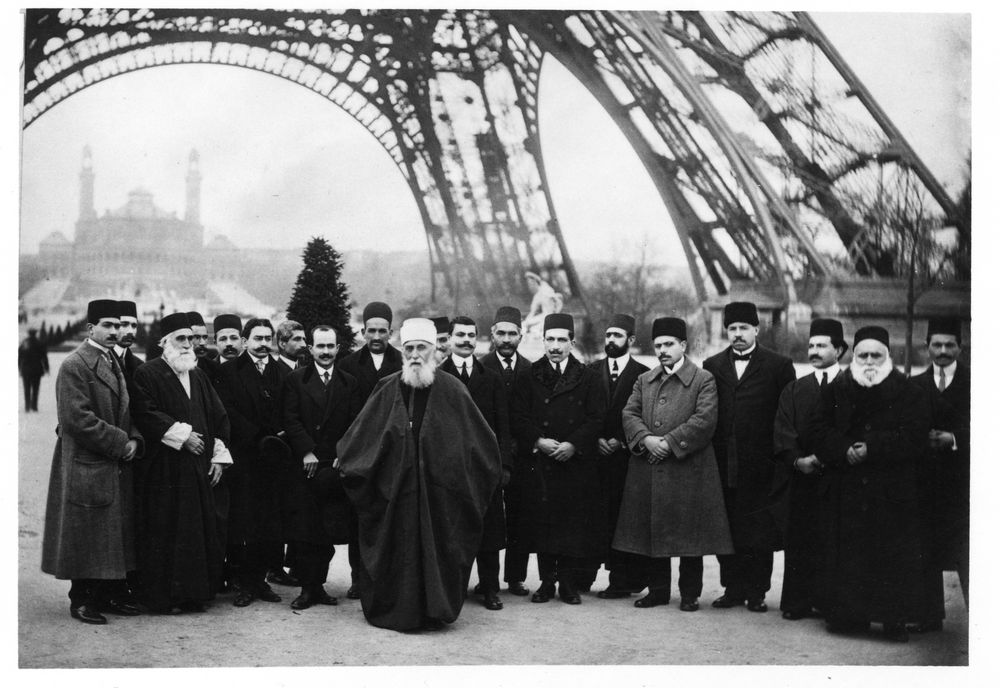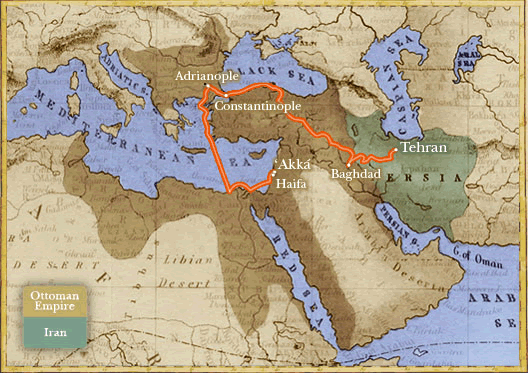There are currently over seven million Bahá’ís in the world, living in 194 nations. They come from every possible social, cultural, ethnic and economic background, forming probably the most diverse and globally embracing community in the history of the planet. At the same time, there are millions more friends of the Faith who actively identify with their values, share their goals and choose to walk the same path of spiritual growth and service.

Although Belgium was touched by the Bahá’í Faith in the late 1920s, when several members of the Esperantist movement, who happened to be Bahá’í, attended a conference in Antwerp in 1927, the first believers to live here were Iranian students attending university in the years immediately preceding World War II. In the post-war period, pioneer teachers in the Faith began to settle here and the first community in Brussels was formed in 1948.
1959, ‘60 and ’61 saw the election of the first Local Spiritual Assemblies in Antwerp, Liege and Charleroi respectively and the first National Spiritual Assembly of the Bahá’ís of Belgium was elected in 1962. Today, the Bahá’í Community of Belgium is present in all three linguistic communities, French, Flemish and German-speaking.
HISTORY 
The Bahá’í Faith originated in Persia (nowadays known as Iran) in the first half of the 19th century, a time when there was a strong tide of messianic expectancy around the globe, not only among Christian communities but also in the Muslim world, where scholars and mystics were expecting the Mahdi, a saintly figure who would purify Islam and prepare it for the return of Christ. One such scholar was the theology student, Mullá Husayn. He was so certain the promised time had arrived that he searched high and low throughout Persia before arriving, one afternoon, at the gates of the city of Shiraz. There he was greeted by a gracious and charismatic young merchant of that city, who wore a green turban (which indicates the lineage of the Prophet) and who seemed to be expecting him.
HISTORY 
This young man, Siyyid ‘Alí-Muhammad, would soon be known throughout Persia and Iraq as the Báb, which means “The Gate”, and Mullá Husayn would become the first of his eighteen close disciples. Because the new Faith upset the comfortable, well-established doctrines of the time, exposing corrupt practices and superstitions for what they really were, the Bábis soon found themselves the target of fierce persecutions by the Muslim clergy. The Báb was put under house arrest, which quickly became an indefinite prison sentence.
However, His fame and the level of respect accorded Him, even by His jailers, only increased. After extended periods in different prison fortresses around the country – a vain attempt by the authorities to separate Him from His disciples, curb His influence and force Him to recant – the Báb was “tried” in absentia without any right of defence or due process and treacherously executed by military firing squad in the main square of Tabriz. He was 31 years old.
HISTORY 

The Prophet Founder of the Bahá’í Faith, Bahá’u’lláh, was born Mírzá Husayn-`Alí Núrí in Teheran in 1817. His father was a minister at the court of the Shah and it was intended that Mirza Husayn Ali would follow him. From an early age he was widely admired for his intelligence, sweetness of character and ability to resolve even the most abstruse problems.
Even his elders would seek his advice on difficult questions. However, as a young man, he showed far more interest in spiritual matters, the beauty of the natural world and the welfare of the poor and downtrodden, than in the doings of statesmen or the politics of the time.
When the Báb declared Himself, Bahá’u’lláh was immediately convinced that this was the True One from God, and without ever meeting Him, became His most ardent disciple. In 1853, three years after the treacherous execution of His Lord, one of the many pogroms against the followers of the Báb resulted in Mirza Husayn Ali, whom the believers had begun to refer to as “the Blessed Beauty”, also being imprisoned.
It was during this harsh period of incarceration in the Shah’s dungeons that He received the Divine Revelation singling Him out among all men as the Great Teacher the Báb had foretold, the Promised One of all Faiths. He told no one of this revelation, though many noticed a mighty change in the One they soon came to regard as their Defender and Protector. Ten years would pass before Bahá’u’lláh revealed himself to the exiled Bábi community in Baghdad as the Manifestation of God for this day, destined to unite all humanity into one family and one Faith. At that time He was referred to as Bahá’u’lláh, which means “Glory of God”.
A time of persecution and exile had begun for Bahá’u’lláh, His family and companions that would send them away from Iran to Baghdad in Iraq, then to Constantinople, capital of the Ottoman empire, and finally to the prison fortress of Acre, now part of Israel, in what was formerly Palestine. From being despised and feared upon His arrival, Bahá’u’lláh became the object of deep veneration and respect in the region. Although still officially a prisoner, the last years of His life were spent in relative freedom at the Mansion of Bahji, close to Acre, where He died in 1892 and where his earthly remains are interred. It is now the most sacred spot on earth for the Bahá’í World Community, the point toward which all believers turn in daily prayer.
HISTORY 
During a time of great hardship after the passing of his father, ‘Abdu’l-Bahá, Bahá’u’lláh’s eldest son, His appointed heir and the Centre of His Covenant, began work on the shrine of the Báb, whose mortal remains had remained hidden from the authorities for many years. This marked the start of the establishment of the World Centre of the Bahá’í Faith on Mount Carmel. Finally released from restrictions on his movements by the Young Turk Revolution of 1908, ‘Abdu’l-Bahá began a series of Journeys to the West, which would take him to the United States and Canada, as well as to England, France, Switzerland and Germany.
He was the greatest teacher of the Faith, providing continued guidance to the Baha’í community, and being invited to speak publicly in city halls, churches and synagogues.

His influence on the emerging internationalist movement was considerable and the first draft of the League of Nations charter (the international peace organization set up after World War I) was sent to ‘Abdu’l-Bahá for his comments. He died in Haifa in November 1921 and, in accordance with his Will and Testament, care for and authority over the now much larger and stronger world community passed to his grandson Shoghi Effendi.
Today’s international and highly diverse Bahá’í community also turns toward the Holy Land for guidance and governance, as it is there, on the slopes of Mount Carmel in Haifa, close to the magnificent, golden-domed Shrine of the Báb, that the Faith has its administrative headquarters and where the Universal House of Justice, the Bahá’í community’s supreme elected authority, meets to consult.


